May 14 - 20, 2017: Issue 312
Whale Migration Season Commences
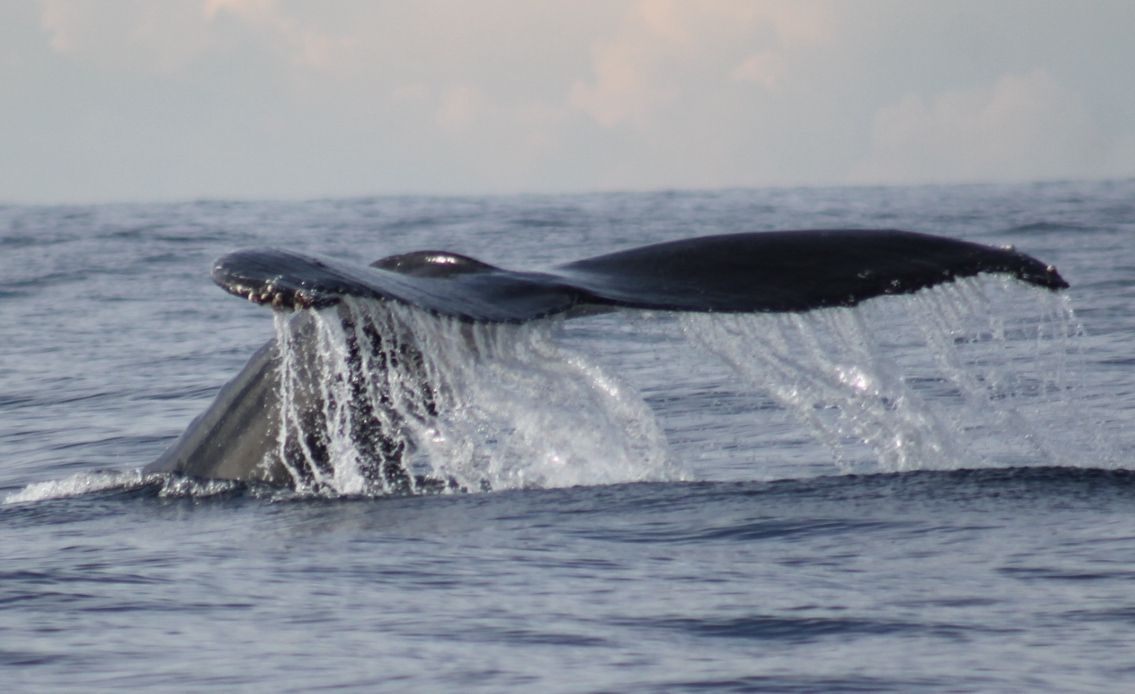
On the last weekend of April Shark nets that have helped to protect beaches in Newcastle, Sydney and Wollongong were pulled up to coincide with the start of the whale migration season and ensuring these magnificent gentle giants will not be entangled in them. There have been calls this week to an early end for the North Coast Shark Net Trial but as yet the NSW DPI's Minister, The Hon. Niall Blair, in a media release earlier this week, has stated the six month trial will continue until June 13th.
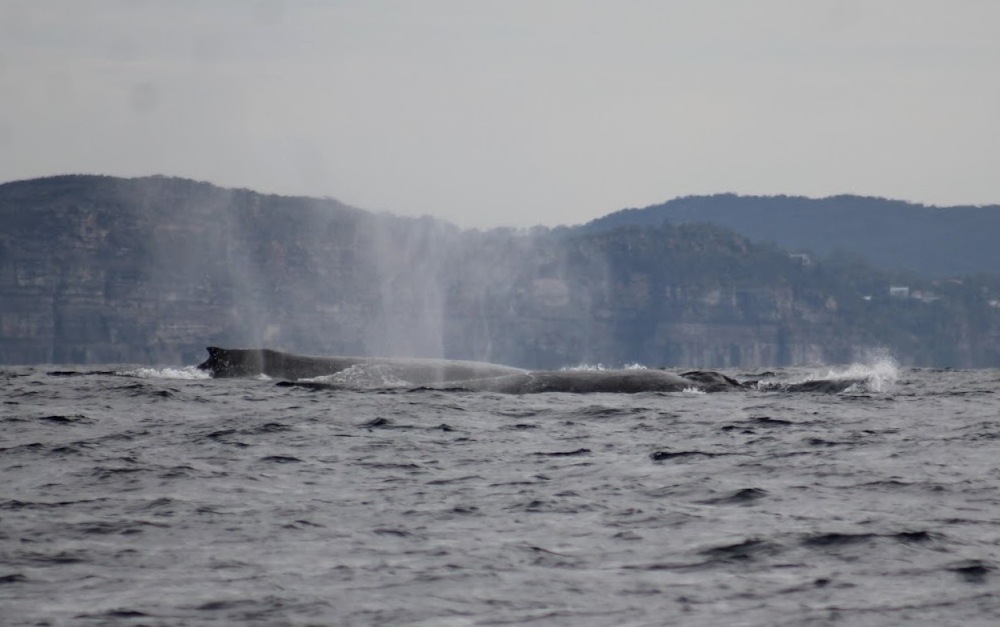

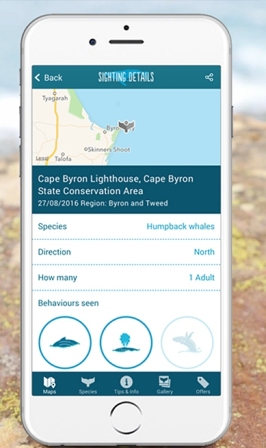 Download the Wild About Whales App
Download the Wild About Whales App
As in past years some of these whales will come closer to our shores and may even visit the bays of our beaches. Approach zone rules are in place to look after the whales as much as yourself. These are:
If you’re in the water – swimming, diving or just enjoying the water on your own or with friends and you spot a whale, then you must stay at least 30m from the whale in any direction. You must also not wait in front of the whale/s, or approach from behind.
If you’re on the water – if you’re on a powered or non-powered water vessel such as a boat, surfboard, surf ski or kayak, then you need to maintain a distance of at least 100m from the whale/s, and 300m if a calf is present.
For all water vessels, a distance of between 100m and 300m is established as the ‘caution zone’. In this zone, vessels must travel at a constant slow speed and leave a negligible wake. It’s also important to assess the direction that the whales are traveling in, and then plan the best course of action.
If using a ‘prohibited vessel’ (that is, a vessel that can make fast and erratic movements and not much noise under water such as a jet ski or parasail boat) then the distance increases to at least 300m from the whale/s.
There is also to be no waiting in front of the whale/s, or approaching from behind.
The NSW Government's Wild About Whales have issued their first blog post for the Whale Watchers season on Friday, May 12th which is all about
"The Baleen Routine: A beginner's guide to whale watching", and includes tips about:
When to go - Depending on the time of year, whale populations fluctuate within the different regions of NSW. Whales meet their need for food and suitable calving areas by traveling long distances from cold feeding areas, to warm, shallower waters further north for calving and mating. Between the months of May and July whales are easier to spot north of Illawarra, when they undertake their migration northward from Antarctica. Likewise, September to November sees the whales return with calves in tow closer to the shore on their southern migration to the Antarctic.
The Best time of day to see whales - Late mornings and early afternoons present themselves as the best time to spot the whales as to avoid glare off the waters surface. Early morning can also be good as the blow is often backlit by the morning sun’s glow. However, the migrating whales are travelling past constantly, so you just might see them at any time.
Where to go - There are a number of great places along the NSW coastline to visit to spot whales stretching from the south to north coasts of New South Wales. The national parks in each of these regions are a great place to start planning your next coastal adventure.
Where to stay if you're going away - There are a variety of accommodation options right up and down the New South Wales coast. With over 860 national parks and reserves in NSW, many of which provide excellent viewing opportunities. From Byron Bay's Lighthouse Keeper's Cottages to the secluded campsites of Eden and it’s surrounds, your options are fairly limitless - NPWS also offer regular off-holiday season packages for some of these places as well - so well worth making something memorable even more memorable by selecting one of these beautiful locations.
What to take with you - Warm clothes and a blanket, Chairs to sit on, Hat and sunscreen, Thermos with a hot drink or soup, Drinking water and food,Binoculars and sunglasses, Camera, (with a telephoto lens if you have one), Wild About Whales app on your phone - Patience!
How to spot a whale - Look for the telltale ‘blow’ – the water sprayed into the air as the whale exhales when it comes to the surface.
Head out on a clear day as the blow is best spotted in calm seas.

what a whale 'blow' looks like
You can sometimes identify the whales species due to its blow. For example sperm whales spray the water forward and to the left, while southern right whales blow in a distinctive V shape.
Look for the whale’s body as it surfaces. Humpbacks and southern right whales often put on spectacular displays as they arch, roll and crash around the water. This is called breaching and is your best chance to identify the species.
Visit Wild About Whales full list of tips and guidelines for more.

 Download the Wild About Whales App
Download the Wild About Whales AppThis is great - so many people utilise this service now so that even if you're stuck in an office you can see where people are spotting whales along our coast.
What you can do with the WAW App:
- Publish your sightings in real-time
- Plan and book your coastal adventure
- See where the whales are right now, in map and list views
- Receive notifications when whale sightings are logged along the coast
- Filter sightings by timeframe and region so you can focus on the sightings you are interested in
- See how the season progresses with the whale sightings counter
- Share your own whale shots on the gallery
- Learn about different whale species
- See tips for spotting them and the best vantage points.
You can download the free Wild About Whales app at the Apple Store or Google Marketplace or search "Whales NSW" in your preferred mobile app store.
Report distressed whales
If you see a stranded, entangled or sick whale in distress, please report it immediately to the NSW National Parks and Wildlife Service Duty Officer on (02) 9895 7128 or ORRCA Whale and Dolphin Rescue on (02) 9415 3333 (24 hours hotline).
About Wild About Whales
Wild About Whales aims to inform and educate about whales, as well as provide you with opportunities to engage with these amazing animals. You can also become a volunteer, donate to whale-related conservation projects or go on a Discovery tour to learn more about whales.
Wild About Whales is a campaign website run by the NSW National Parks and Wildlife Service (NPWS), which is part of the NSW Office of Environment and Heritage (OEH).
NPWS was established in 1967 to administer a fledgling system of national parks and has since expanded to manage and conserve almost 800 parks and reserves – more than 6.6 million hectares – including rainforests, beaches, alpine areas, vast wilderness areas, marine parks and places of cultural and historic significance.
ORRCA Humpback Whale Migration Census Day 2017
Hosted by ORRCA
Sunday, June 25 at 5 AM - 6 PM
Members and Friends, this is your Invitation to;
The 2017 ORRCA Humpback Whale Migration Census
It’s a great day out. Simply pick your favourite headland and call or email the hotline to register your location so we know where you will be. Make sure you print off some marine mammal sighting log sheets from our website.
Then on the day, pack a picnic and your supplies; Binoculars, camera, a pen/pencil for recording details, a chair/rug to sit on, warm waterproof clothes and off you go and enjoy the sights that unfold in this great whale migration. Remember to record your sightings!
Finally, at the end of the day, please report your findings back into the ORRCA hotline (02 9415 3333) and post/email your log sheets intoorrca@orrca.org.au
Fantasea Palm Beach Ferry offers a Whale Watching adventure from Palm Beach Ferry wharf during the northern migration and again when the whales are heading back south.
Calling their 3 hour cruise "Pittwater’s best wildlife adventure" this short run of dates are all on a Sunday, so great for a whole family experience and with the family in mind they offer a Family package price for 2 adults and 3 children.
Humpback whales are considered to be the best species for whale watching, and known to be the most acrobatic of all the whale species. Each whale has unique markings on the underside of the tail (the fluke). You might even be lucky enough to observe 45 tonnes of whale leaping right out of the water!
Their cruise includes an experienced marine biologist on board, giving expert explanations about the whales and their behaviour, crew who are knowledgeable about our area and can explain the history and wildlife of our area. Plenty of room for viewing – we limit our capacity so everyone gets front row views to the whale show.
Cruise Schedule
Cruise Dates
Northern Migration 25th June / 2nd July / 9th July / 16th July
Southern Migration 1st October / 8th October / 15th October
Departure Location Palm Beach Wharf (08:45 a.m.) Ettalong Wharf (09:15 a.m.)
Find out more at: https://www.fantasea.com.au/palmbeachferries-whale-watching/
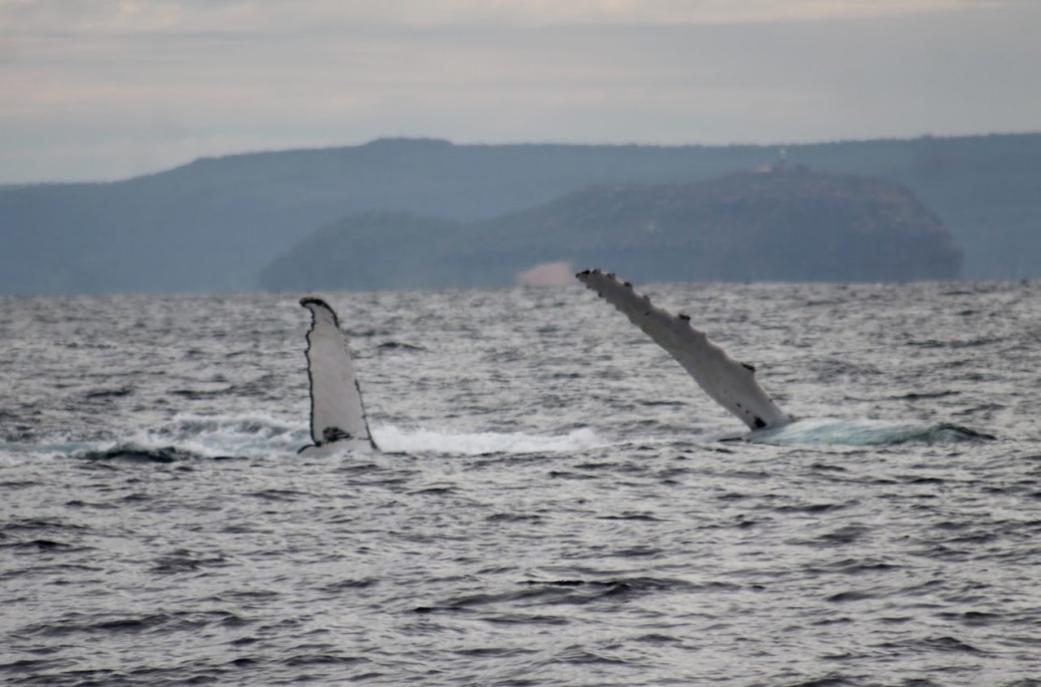
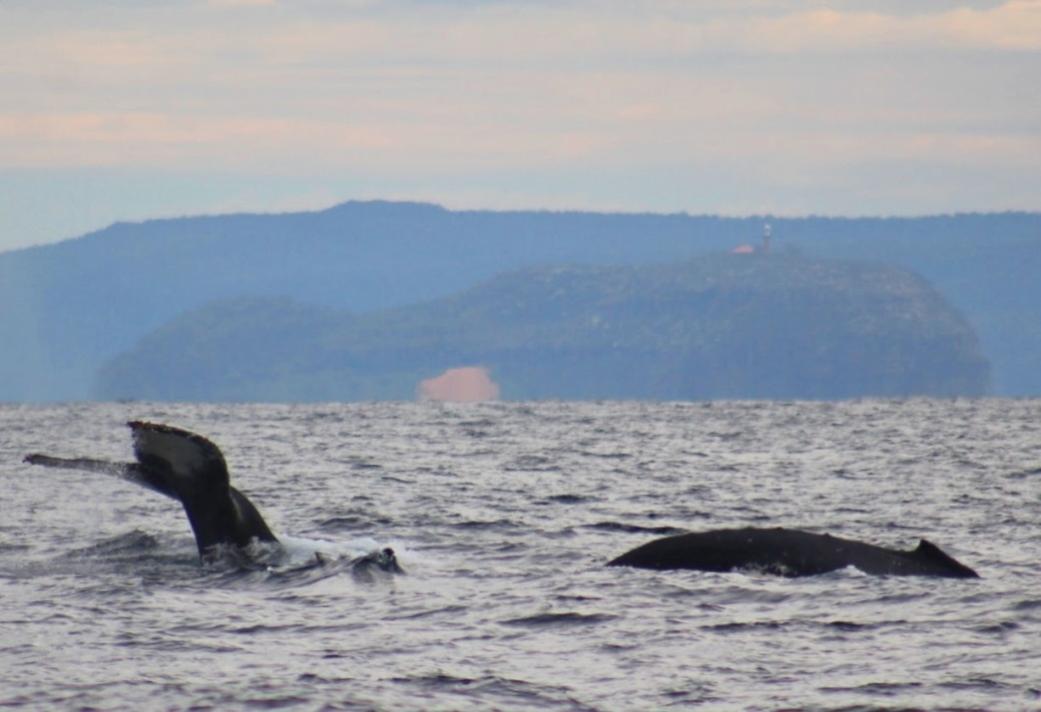
North Coast Net Trial To End In June
Tuesday, 9 May 2017: Media Release - The Hon. Niall Blair, Minister for Primary Industries, Minister for Regional Water, Minister for Trade and Industry
NSW Minister for Primary Industries, Niall Blair today announced June 13 as the end date for the six-month North Coast shark net trial.
Mr Blair said by mid-June the five trial nets at Lighthouse Beach (Ballina), Sharpes Beach (Ballina), Shelly Beach (Ballina), Seven Mile Beach (Lennox Head) and Evans Head Beach will have been in the water for six months.
“The data from the trial will now be analysed by DPI shark scientists to assess the effectiveness of the nets,” Mr Blair said.
“We will also continue to consult with the local community to gauge their views on the outcomes of the trial.
“When the nets are removed, we will increase the number of SMART drumlines to 35 (currently 25) – this will also be the most effective measure as the whale migration period begins on the North Coast.”
Helicopter surveillance will continue to operate on the North Coast every weekend and daily flights will commence during the July school holidays.
Mr Blair said drones will also take to the skies again during the July school holidays to provide further surveillance at popular beaches.
Monthly data shows that more target sharks were caught using SMART drumlines:
North Coast Net Trial – Five month cumulative figures
Six target sharks caught (two White, one Bull, three Tiger sharks); three deceased, three alive.
A total of 244 non-target animals were caught in the nets; 117 were released alive (48%) and 127 (52%) were found deceased in the nets.
SMART Drumline - Five month cumulative figures
29 target sharks (24 White, 3 Tiger and 2 Bull sharks); one White shark deceased (entangled), all others alive.
Two non-target animals (both Greynurse sharks) were caught and both were released alive.
The NSW Government will now work with shark scientists, the Commonwealth and the community to determine the future of the nets with a decision expected by early spring.
________________________________________
During the fifth month, a total of 65 individuals from 13 species were caught in the mesh nets.
15 animals (23%) were released alive,
50 animals (77%) were deceased (tissue samples were retained for analyses).
No target sharks (White, Tiger or Bull sharks) were caught.
Seven Mile, Lennox Head: Common Blacktip Shark - 1 dead
Sharpes, Ballina: Grey Nurse Shark - 1 dead, Great Hammerhead Shark - 1 dead
Main, Evans Head: Great Hammerhead Shark - 2 dead
Shark net trial facts
Shark nets are installed near a beach, according to prevailing conditions, generally parallel to the beach near surf clubs and patrolled swimming areas
Shark nets do not create an enclosed area, or provide a barrier between beachgoers and sharks. They are designed to reduce the likelihood of shark interactions by catching large, potentially dangerous sharks aggregating near the netted beach
Shark nets currently used in NSW are 150 metres long by 6 metres deep, with a mesh size of 60 cm, set below the surface in about 10 to 12 metres of water, within 500 metres of the shore
Shark nets are fitted with ‘whale alarms’ and ‘dolphin pingers’ to deter marine mammals from the netted area
NSW North Coast Shark Meshing Trial Reports:
8 Apr 2017 - 7 May 2017
8 Mar 2017 - 7 Apr 2017
8 Feb 2017 - 7 Mar 2017
8 Jan 2017 - 7 Feb 2017
8 Dec 2016 - 7 Jan 2017
All reports available here: http://www.dpi.nsw.gov.au/fishing/sharks/management/shark-net-trial
________________________________________
Grey Nurse Shark (Carcharias taurus)
Legislative protection - Environment Protection and Biodiversity Conservation Act 1999
The Grey Nurse Shark is listed as two separate populations under the Environment Protection and Biodiversity Conservation Act 1999 (EPBC Act).
The east coast population is listed as critically endangered.
EPBC Act Status and Documents - Carcharias taurus (east coast population) — Grey Nurse Shark (east coast population)
The west coast population is listed as vulnerable.
EPBC Act Status and Documents - Carcharias taurus (west coast population) — Grey Nurse Shark (west coast population) Glossary
This species became the first protected shark in the world when the New South Wales Government declared it a protected species in 1984. Grey nurse sharks are now protected under fisheries legislation in New South Wales, Tasmania, Queensland and Western Australia.
Globally, the species is listed as Vulnerable in the IUCN Red List of Threatened Animals in March 2000.
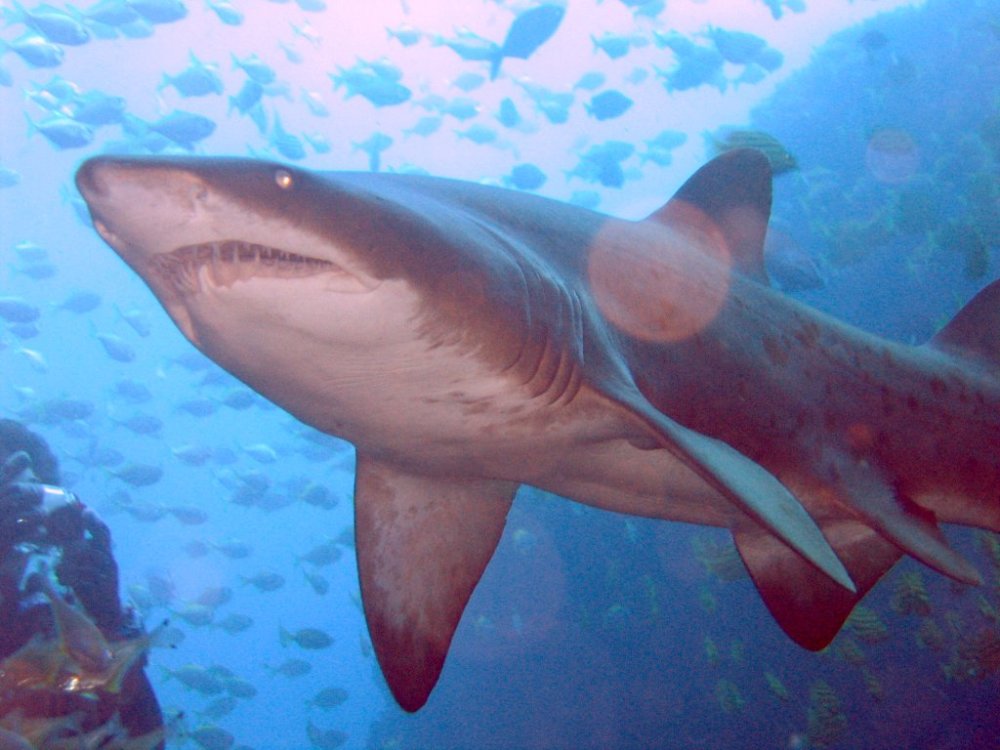
Grey Nurse Shark at Fish Rock Cave, NSW - photo by and courtesy Richard Ling
‘Whispering’ Keeps Humpbacks Safe From Killer Whales, Study Finds
26 April 2017: from British Ecological Society
By Jenny Meyer
Newborn humpback whales 'whisper' to their mothers to avoid being overheard by killer whales, researchers have discovered. The recordings – the first obtained from tags directly attached to the whales – are published today in Functional Ecology.
Ecologists from Denmark and Australia used temporary tags on humpback mothers and their calves in Exmouth Gulf off western Australia to learn more about the first months of a humpback’s life.
According to lead author Simone Videsen of the University of Aarhus:
“We know next to nothing about the early life stages of whales in the wild, but they are crucial for the calves’ survival during the long migration to their feeding grounds.”
“This migration is very demanding for young calves. They travel 5,000 miles across open water in rough seas and with strong winds. Knowing more about their suckling will help us understand what could disrupt this critical behaviour, so we can target conservation efforts more effectively.”
Humpbacks spend their summer in the food-rich waters of the Antarctic or Arctic, and in the winter migrate to the tropics to breed and mate. While in tropical waters such as Exmouth Gulf, calves must gain as much weight as possible to embark on their first, epic migration.
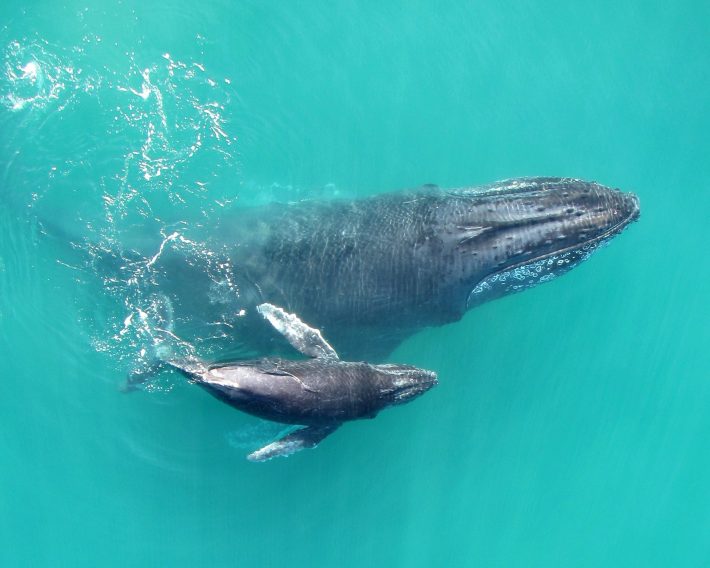
Mother-calf pair in Exmouth Gulf - photo credit, Fredrik Christiansen
Together with colleagues from Murdoch University, Videsen tagged eight calves and two mothers. To capture the faint sounds of the calves, they used special tags developed by the University of St Andrews.
The tags attach to whales via suction cups and record sounds made and heard by whales, along with their movements, for up to 48 hours before detaching to float at the surface.
The study found that mothers and calves spend significant amounts of time nursing and resting. The recordings also revealed that newborn humpbacks communicate with their mothers using intimate grunts and squeaks – a far cry from the loud, haunting song of the male humpback whale.
The data tags showed that these quiet calls usually occurred while whales were swimming, suggesting they help mother and calf keep together in the murky waters of Exmouth Gulf.
“We also heard a lot of rubbing sounds, like two balloons being rubbed together, which we think was the calf nudging its mother when it wants to nurse,” says Videsen.
Such quiet communication helps reduce the risk of being overheard by killer whales nearby, she believes: “Killer whales hunt young humpback calves outside Exmouth Gulf, so by calling softly to its mother the calf is less likely to be heard by killer whales, and avoid attracting male humpbacks who want to mate with the nursing females.”
The findings will help conserve this important humpback habitat and – crucially – ensure these nursery waters are kept as quiet as possible.
“From our research, we have learned that mother-calf pairs are likely to be sensitive to increases in ship noise. Because mother and calf communicate in whispers, shipping noise could easily mask these quiet calls.”
There are two major humpback whale populations, one in the northern hemisphere and the other in the south. Both breed in the tropics during the winter and then migrate to the Arctic or Antarctic during the summer to feed.
Humpback whales are slow to reproduce. Pregnancy lasts for around one year and calves – which are 5 metres at birth – stay with their mothers until they are one year old. During their first weeks of life, calves can grow by up to one metre per month.
Simone K. A. Videsen, Lars Bejder, Mark Johnson and Peter T. Madsen (2017). ‘High suckling rates and acoustic crypsis of humpback whale neonates maximise potential for mother-calf energy transfer’, DOI 10.1111/1365-2435.12871, was published in Functional Ecology on 26 April 2017.
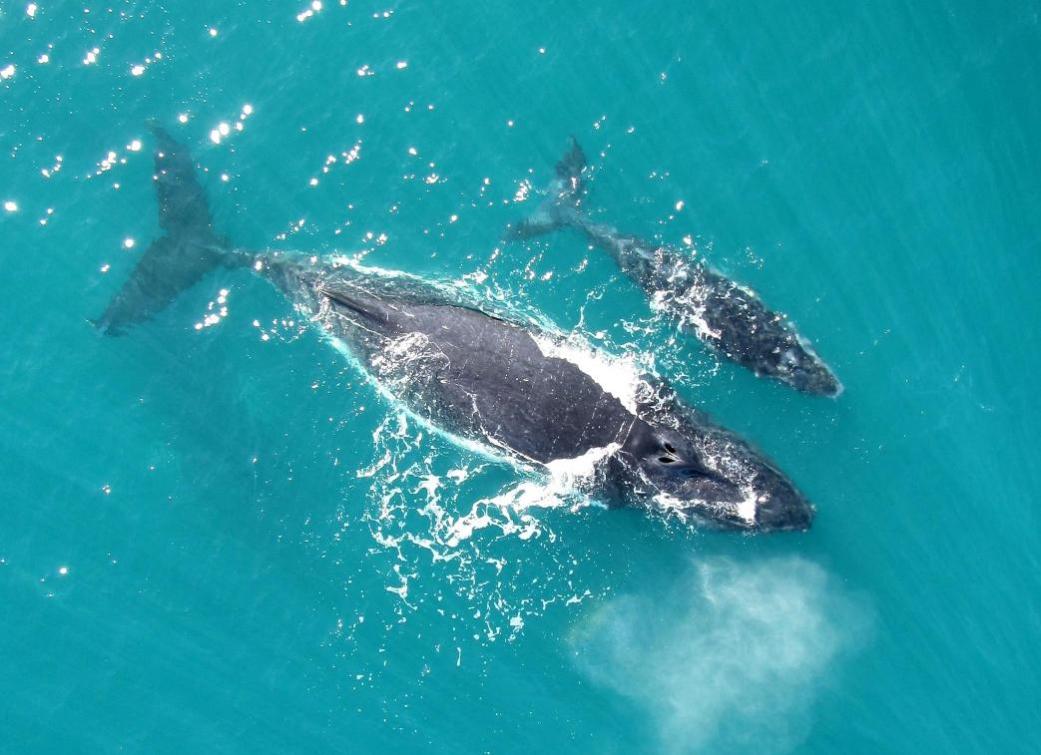
A mother-calf pair in Exmouth Gulf. Credit: Fredrik Christiansen